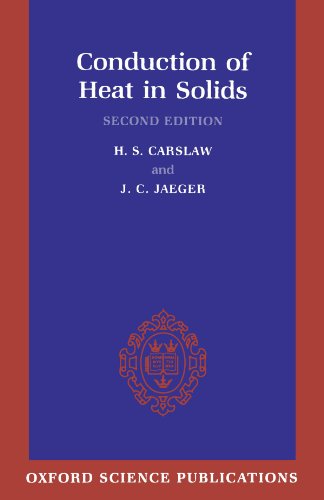Conduction of Heat in Solids epub
Par naples maria le mardi, novembre 22 2016, 23:02 - Lien permanent
Conduction of Heat in Solids. H. S. Carslaw, J. C. Jaeger

Conduction.of.Heat.in.Solids.pdf
ISBN: 0198533683,9780198533689 | 517 pages | 13 Mb

Conduction of Heat in Solids H. S. Carslaw, J. C. Jaeger
Publisher: Oxford University Press, USA
Conduction is essentially heat transfer through solids. Their best method is conduction. Conduction occurs mainly in solids. Here are quick definitions, how they apply to your attic, and how to fix them: 1. In the event that heat transfer occurs through several solids, the above equation can be adapted by supplementing the solid's thickness (L) divided by its thermal conductivity (λ). Conduction can simply be thought of as heat transfer by “touch”, and only can occur in matter (solids, liquids and gases). In this process, heat is transferred from particles to particles of the solid, without the actual movement of the particles. There are three main forms of heat transfer which are commonly referred to within the process engineering industry: Conduction. Conduction is a process of heat transfer in solids. Any radiation which is absorbed turns into heat. We'll also introduce radiation, gravity and heat conduction in solids. Most liquids are poor conductors of heat. Like for solids mode of transfer of heat is conduction. We have a collection of science projects, videos and experiments for various grades and topics. From this conduction, including gravity, convection is formed. All gases are poor conductors of heat. How is heat transferred in solids? These waves have different wave lengths depending on the temperature of the heat source. ΔT = temperature difference between two systems.